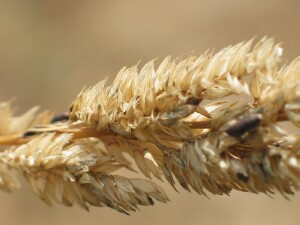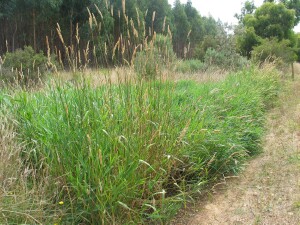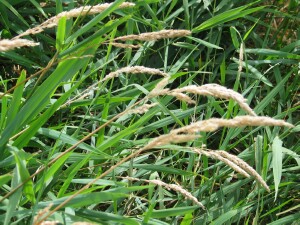Reed Canary-Grass
Back | Salinity Indicator Plants Home | Common name home | Scientific name home | Photo Gallery | Glossary
Page top
| Reed Canary-Grass photos | Family: Grass (Poaceae syn. Gramineae) |
| Scientific Name: | Phalaris arundinacea | 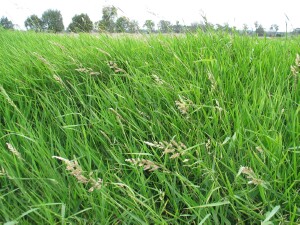 Dense stand of Reed Canary-grass Photo: A J Brown | |||||
Status: | Native to Europe and temperate Asia. Also found in North America and southern Africa. Naturalised in Western Australia, New South Wales, Tasmania and Victoria. | ||||||
Plant Description: | Perennial grass with a rhizomatous root system and erect stems to 2 m tall. Leaves are smooth and hairless from 10-35 cm long and 6-18 mm wide. Flower-head is a spreading panicle, 5-25 cm long and 1-5 cm wide with crowded spikelets on each branch. Spikelets 4-6 mm long. Anthers light brown to mauve. | ||||||
Habitat: | Scattered but uncommon throughout Victoria. Grows in water or on very wet sites and is very tolerant of waterlogging. Has been observed in the Gippsland Lakes to tolerate salinity and acid sulfate soils.
| ||||||
Comments: | Grows on wetter sites and appears to tolerate more salinity than Toowoomba Canary-grass (Phalaris aquatica). Often grows in very dense stands. |
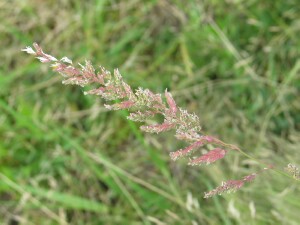 Flower-head of Reed Canary-grass Photo: A J Brown | 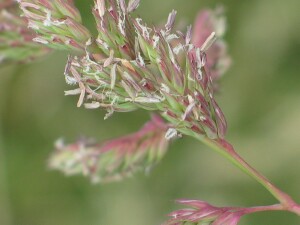 Spikelets of Reed Canary-grass showing exserted anthers and feathery stigmas Photo: A J Brown |
|
|
|

